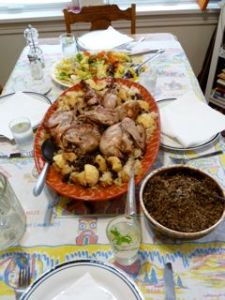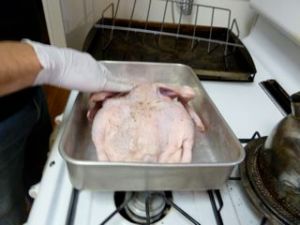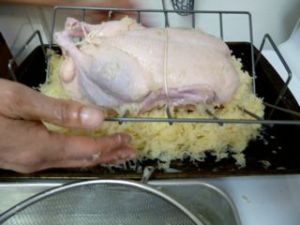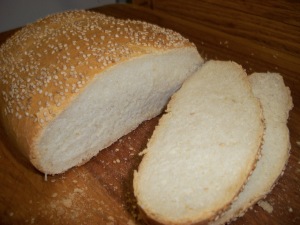
cookbooks!
Three years and three months since I started this blog, there have been nearly 7,000 views, online including my various micro reviews of cookbooks- about five-dozen titles so far. It’s actually one of my favorite subjects, and I have published some 5 or 6 previous cookbook gazetteers over the past few years. I haven’t counted how many volumes I have in my kitchen library, but it’s possibly a couple of hundred. Here are a few more lucky finds, often found second-hand. Believe it or not, I have found unused, $40 titles seconded for $3.99 in local bargain and thrift stores – or estate sales.
For new readers, I’ve been using this basic index framework for a couple of years, for lack of any other template.
Native
Native American Cooking; Foods of the Southwest Indian Nations. Lois Ellen Frank, 1991, Clarkson Potter/Publishers, NY.
ISBN -0-517-57417-9
This title demonstrates that a non-Native author can in fact create a quite decent book about Native foods, as a tribute rather than appropriation. It’s creative and visually inspiring as well. Many individuals and Native communities contributed to the book, and they are well credited at the very beginning. Frank tackles some delightful and unexpected recipes, and backs them up with striking photos (she’s a photag). If you come across this title, grab it.
Colonial
The Food of Portugal
Jean Anderson, 1986, William Morrow and Company, Inc, NY.
ISBN 0-688-04363-1
I’m including this richly turned-out book under colonial cooking because it manages to lend greater understanding to contemporary global fusion cooking. In three hundred pages, the author authoritatively translates cooking traditions across hemispheres, from Macau to Brazil. Portuguese cookery has benefited from- and likewise influenced foods and cuisines across the Americas, and beyond.
Groundbreaking publications (19/20Centuries)
Savoring the Seasons of the Northern Heartland
Beth Dooley and Lucia Watson
Knopf, NY 1995
ISBN0-679-41175-5
Many Minnesotans, especially Minneapolitans, will recognize these authors. I was fortunate to cook at Lucia’s restaurant in Minneapolis around the time this fine cookbook was published, and it was and is a marvelous piece of work because it is a one-stop celebration of seasonal cooking, upper mid-West heritage (including Native traditions). At the time of printing most local and seasonal cuisine was confined to vegetarian or other alternative cafes. We emphasized cooking locally and seasonally at The New Riverside Café, for example in the 1980s. This cookbook is endlessly captivating to read, with a homey layout and deft writing.
Lucia’s restaurant just received James Beard Award recognition this past month, which gives you some idea of the quality of the food and service at this excellent establishment. Congratulations, Lucia!
Classic American
‘cookin’ country cajun: Basic Acadian Cooking from the True Acadian Country of Louisiana.”
Bobby Potts, 1989, Express Publishing Co
ISBN 0-935031-40-5
I have a Louisiana cookbook (by renowned chef Paul Prudhomme – which I have previously reviewed) that I’ve relied upon for 20 years. However, I feel very fortunate to have stumbled on this startling, slender paperback of only 64 pages. Thinner than a slice of bread, this guide is packed from floorboard to rafter, and front to back, with visually stunning photos and authoritative information and recipes from Cajun country. I haven’t looked to see if more are available online, but if you can, get ye a copy of this little treasure.
Comprehensive Cuisine
Amana Colony Recipes
Compiled by the Ladies Auxiliary of the Homestead Welfare Club
Homestead Iowa, 1948
No ISBN assigned, no publisher listed.
A wonderfully printed collection of sheer comfort food from the kitchens of the Amana religious societies. Recognize the name? Refrigerators? Air conditioners? Various household appliances? Yup, that’s them. The Amana cooking traditions are well known and loved, so it’s nice to see them represented in this benevolent book. There is one index in German, and one in English, reflecting the cultural origins of this respected sect of Christianity. While the recipe selections are the very picture of simplicity on the surface, any one of them would travel well to a starred restaurant.
Vegetarian
The book of Miso
William Shurtleff and Akiko Aoyagi
Autumn Press, MA, 1976
ISBN 0-394-73432-7
This handy volume is almost an expression of artisanal quality, just like the authors’ beloved fraternal twin: The Book of Tofu. I think I have had my copies for 25-30 years now. I actually used to make homemade tofu at home for years. There is no aspect of Miso that these authors do not address. It represents indispensible staple in the Japanese kitchen – and it appears in other Asian cuisines as well. This is a fermented soybean paste, highly nutritious and a superfood. Everything from soups to desserts is covered in this fine book, which is also by the way, macrobiotic.
Baking
Danish Home Baking
Karen Berg
Dover,1957
ISBN 0-486-22863-0
With a focus on sweet baked goods, for which Danish baking is justly famed, you can find authentic approaches to every baked good imaginable. The scattering of black and white photos in this modest paperback don’t prevent you from imagining these tantalizing products in color. There is even a metric conversion chart in the back.
World Food
Traditional Venetian Recipes: Cuisine of the Serene Republic
Arsenale & Editrice, 2009
Verona, Italy
Another slim paperback, probably intended for English reading tourists, would be a wonderful addition to any bookshelf. With fold-out front and back covers displaying charming watercolors and characteristic food lore, this tribute to the cuisine of St. Mark shows the amazing intersections of east and west. Marco Polo lived there, and I’m sure he must have had many of these distinctive dishes that make Venetian foods so memorable.
Reference
Schott’s Food & Drink Miscellany
Ben Schott
Bloomsbury, London, 2003
ISBN 0-7475-6654-2
Not exactly where to start. The New York Times did a full review in 2004, “Food Trivia Perilously Close to Usefulness”. (http://www.nytimes.com/2004/09/08/books/08grim.html?_r=0 )
That might actually be a good square one. This miniscule book is tightly packed in tiny print and reads like a fascinating kaleidoscope of incomprehensibly interesting and unrelated information that most foodies would be happy to recite if they do not possess an internal information pause or edit button. I haven’t read it through, but I think it’s meant for casual grazing and distraction.
Quirks
Rose Recipes: Customs, Facts, Fancies
Jean Gordon
Red Rose Publications (who else?) 1958
I never imagined that anyone could squeeze almost 90 pages of recipes centered around that noble flower. After a quick perusal, you may think of Gertrude Stein, “Rose is a rose is a rose is a rose.” Syrups, ice cream, sweets, wine, soups, preserves, roses in ancient Roman food, theology, poetry and medicinals. Rose omelettes, rose prayer beads, rose syrup, skin crème, and on and on. It really is an unusual and intriguing study of an ingredient that western cuisines most often do not exploit. Once many years ago I made a torte that was rose flavored – and our customers at the restaurant seemed to be enchanted by it. However it was so time-intensive that I only made it one time. I called it Gateau: la Vie en Rose. (regards to Mme. Piaf).
“God gave us memory
That we may have roses in December” – Margaret L. Woods
 I began experimenting with French and Italian style bread methods over the years and finally decided to tackle something simple – which as usual, I had long presumed was complicated. The French Fougasse is, and is not, complex; actually it is roughly the equivalent of the Italian Focaccia – a famous & delicious leavened bread.
I began experimenting with French and Italian style bread methods over the years and finally decided to tackle something simple – which as usual, I had long presumed was complicated. The French Fougasse is, and is not, complex; actually it is roughly the equivalent of the Italian Focaccia – a famous & delicious leavened bread.





















